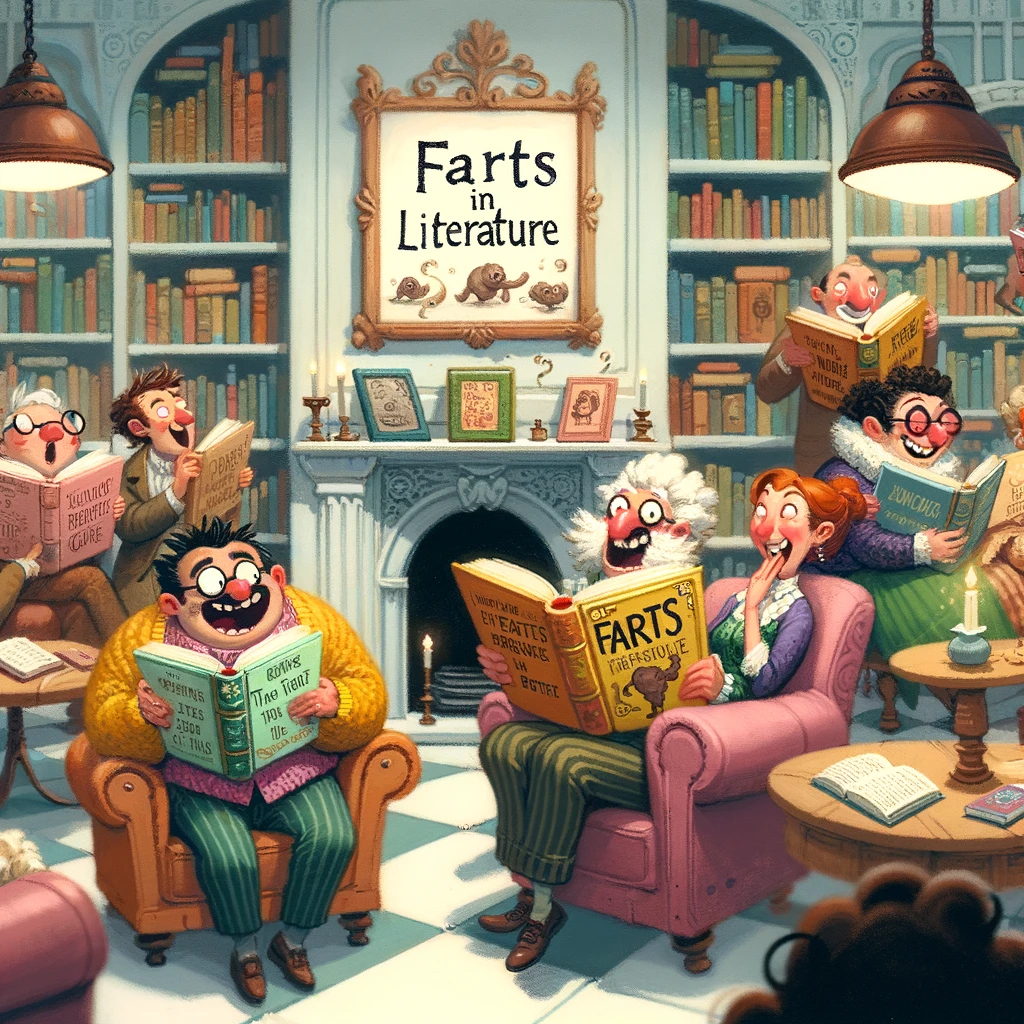A Brief History of Farts in Literature and Art

In the grand tapestry of human culture, where literature and art hold the mirror to society’s face, there’s one reflection we often pretend not to see (or smell): the noble fart. Yes, dear readers, farts have been tooting their way through the annals of history, leaving behind a scent trail in literature and art that’s as rich as it is pungent. Let’s embark on a gusty journey through time to uncover how farts have been the butt of the joke and the silent (but deadly) commentators on the human condition.
The Ancient World: Where Farts Were Divine
Our story begins in ancient times when farts were more than just hot air; they were divine. The Sumerians, credited with the earliest form of writing, didn’t shy away from a good fart joke. Their epic tales were peppered with gods and heroes who weren’t afraid to let one rip. Fast forward to Ancient Greece, where Aristophanes, the father of comedy, penned plays that had audiences rolling in the aisles with fart jokes that were anything but subtle. It seems that even the philosophers and playwrights knew that nothing brings people together like a well-timed toot.
The Middle Ages: Farting Through the Dark Ages
As Europe descended into the Dark Ages, farts shone as beacons of humor in otherwise grim times. The Canterbury Tales, a cornerstone of English literature, doesn’t hold back with its bawdy humor, including a tale where a fart is promised as a gift, proving that Chaucer was a man ahead of his time, or perhaps, just really into toilet humor.
The Renaissance: A Wind of Change
The Renaissance, known for its advancements in art and science, also had its fair share of fart enthusiasts. Leonardo da Vinci, in between painting masterpieces and inventing the helicopter, found time to sketch comedic scenes, including the occasional fart joke. It’s comforting to know that the same man who gave us the Mona Lisa also chuckled at the thought of someone breaking wind.
The Enlightenment: Intellectuals Let Loose
Fast forward to the Enlightenment, where even the intellectual elite couldn’t resist the allure of a good fart joke. Benjamin Franklin, one of America’s founding fathers, penned an essay titled “Fart Proudly,” advocating for the scientific study of farts. It’s a stark reminder that behind every great mind is a great…well, you know.
Modern Times: Farts in the Contemporary Canvas
In modern times, farts continue to make their mark on literature and art, serving as symbols of rebellion, humor, and the human experience. From the irreverent cartoons of The Far Side to the satirical writings of Kurt Vonnegut, farts have been used to puncture the pretentiousness of society, reminding us that at the end of the day, we’re all just flesh and gas.
So, there you have it, a whirlwind tour of farts in literature and art. From ancient epics to modern masterpieces, farts have transcended time and culture, proving that humor, much like a fart in a crowded room, knows no bounds. They remind us that no matter how sophisticated we may think we are, we can’t escape the simple, hilarious truth of our biology. And perhaps, in that shared laughter, we find the true art and literature of humanity.

Leave A Comment